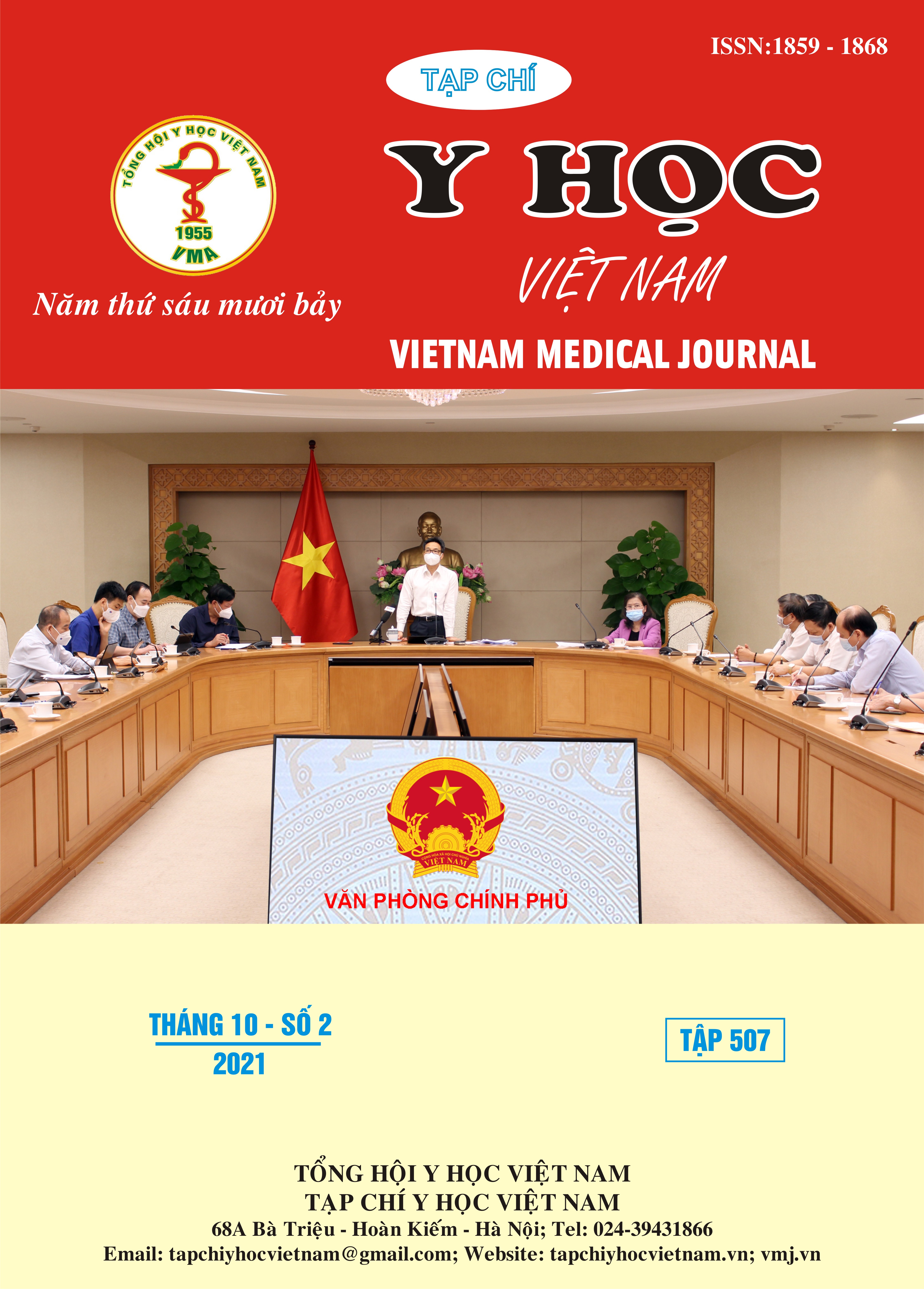INVESTIGATE THE REALITY OF TENDON TISSUE PRESERVATION IN TISSUE ENGINEERING LABORATORY – HANOI MEDICAL UNIVERSITY FROM 2010 TO 2020
Main Article Content
Abstract
Objectives: Investigate the reality of tendon tissue preservation in tissue engineering labotory – Hanoi Medical University from 2010 to 2020. Methods: A cross-sectional descriptive study was taken from total tendon tissue which preserved in tissue engineering labotory – Hanoi Medical University form 2010 to 2020. Results: There were 2139 samples of tendon tissue preserved, of which 2012 samples were used, accounting for 94.1%. Preservation rate of Achilles tendon and patellar tendon accounted for the highest in 2010 and 2011 (60% and 32%), but gradually decreased in recent years (9.7% in 2020 for Achilles tendon and 4.3% for patellar tendon). Meanwhile, from 2010 and 2011, the forearm tendon was not preserved, but this rate increased to 29.7% in 2020. The calf tendon had a strong increase from 4% in 2010 to 56.2% in 2020, especially in 2019 it was 80.9%. The percentage of tendons used over the years has changed greatly, the Achilles tendon and patellar tendon in 2010 (64% and 32%), in 2011 (69.9% and 18.5%) had a high rate of use, but until 2020 this rate significantly reduced to only 6% of the Achilles tendon and 0% of the patellar tendon being used. Otherwise, in 2010 only 4% of the calf tendons were used, without the forearm tendon being used, by 2020, the rate of the calf tendon was 60.7% and the tendon of the forearm was 33.3%. Conclusions: From 2010 to 2020, tendon tissues which preserved in tissue engineering labotory – Hanoi Medical University had many types of tendon tissue was collected, preservation and usage rate is quite high. Achilles tendon and patellar tendon tissue in need of preservation and use tends to decrease, while the forearm tendon and especially the calf tendon are increasingly preserved and used due to changes in attitudes in clinical practice.
Article Details
Keywords
Tendon tissue, Tissue preservation, Allograft tendon
References
2. Trần Hoàng Tùng, Đào Xuân Tích, Ngô Văn Toàn (2013), Nghiên cứu ứng dụng phẫu thuật nội soi điều trị đứt dây chằng chéo trước khớp gối bằng mảnh ghép gân đồng loại tại Bệnh viện Việt Đức, Tạp chí chấn thương chỉnh hình Việt nam, Số đặc biệt, 114–120.
3. Quốc Hội Nước Cộng Hòa Xã Hội Chủ Nghĩa Việt Nam (2007).” Luật hiến, lấy, ghép mô, bộ phận cơ thể người và hiến, lấy xác” Nhà xuất bản Tư Pháp.
4. Quách Thị Yến (2011). Thực trạng bảo quản lạnh sâu mảnh xương sọ để ghép tự thân tại labo bảo quản mô - Trường Đại học Y Hà Nội từ 2002-2010, Luận văn thạc sỹ y học, Trường Đại học Y Hà Nội.
5. Hulet C, Sonnery-Cottet B, Stevenson C, et al (2019). The use of allograft tendons in primary ACL reconstruction. Knee Surg Sports Traumatol Arthrosc; 27(6):1754-1770.
6. Vũ Dương Quý, Phạm Mạnh Hùng (2006): Miễn dịch ghép. Nhà Xuất Bản Y Học, Hà Nội.
7. Van Tongel A, Stuyck J, Bellemans J, Vandenneucker H (2007). Septic arthritis after arthroscopic anterior cruciate ligament reconstruction: a retrospective analysis of incidence management and outcome. Am J Sports Med;35:1059-1063.
8. Vyas D, Rabuck SJ, Harner CD (2012). Allograft anterior cruciate ligament reconstruction: indications, techniques, and outcomes. J Orthop Sports Phys Ther; 42:196–207.


